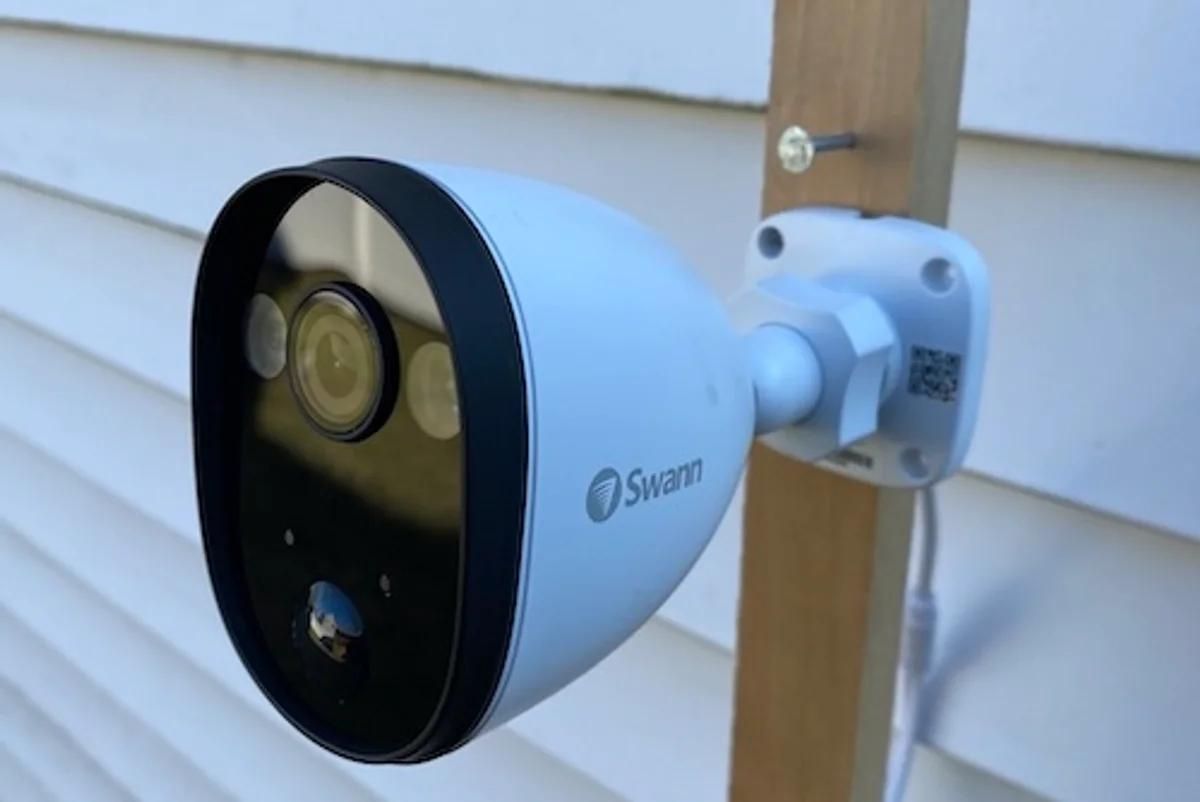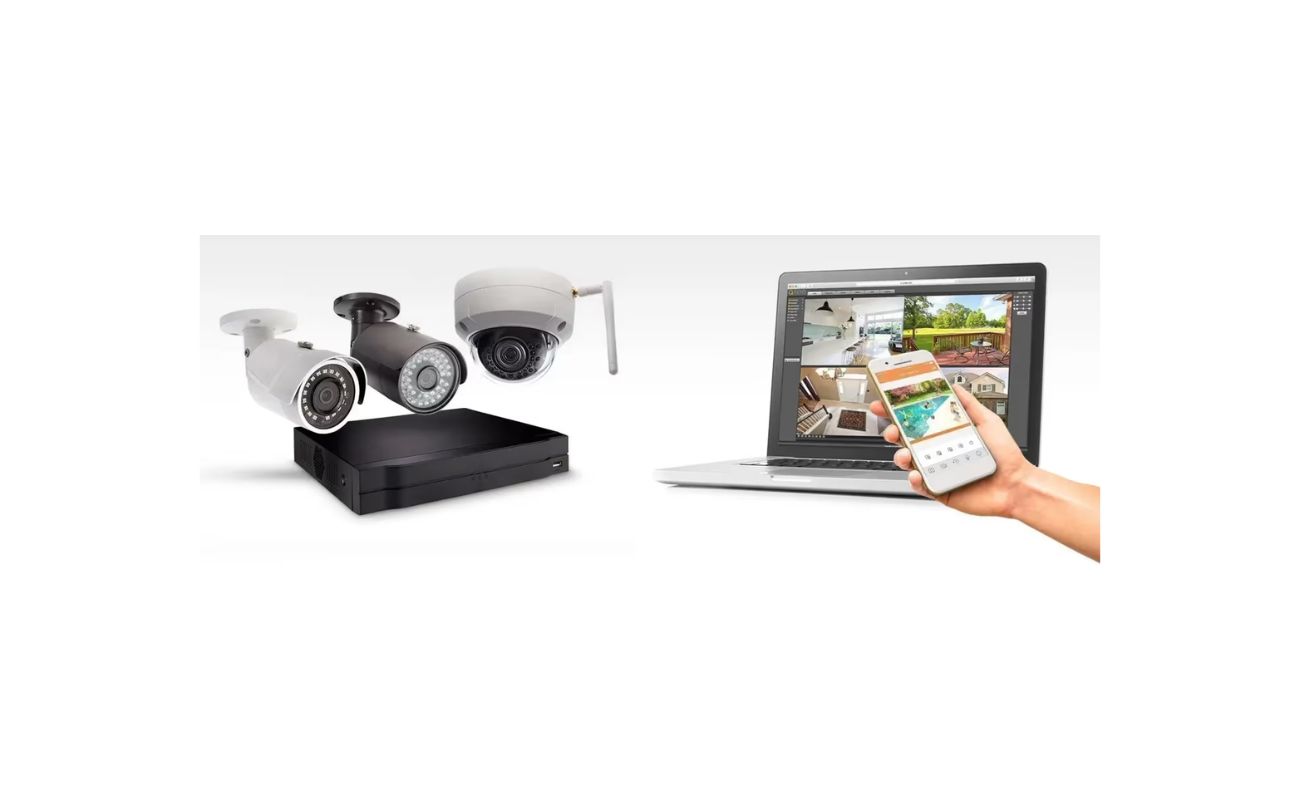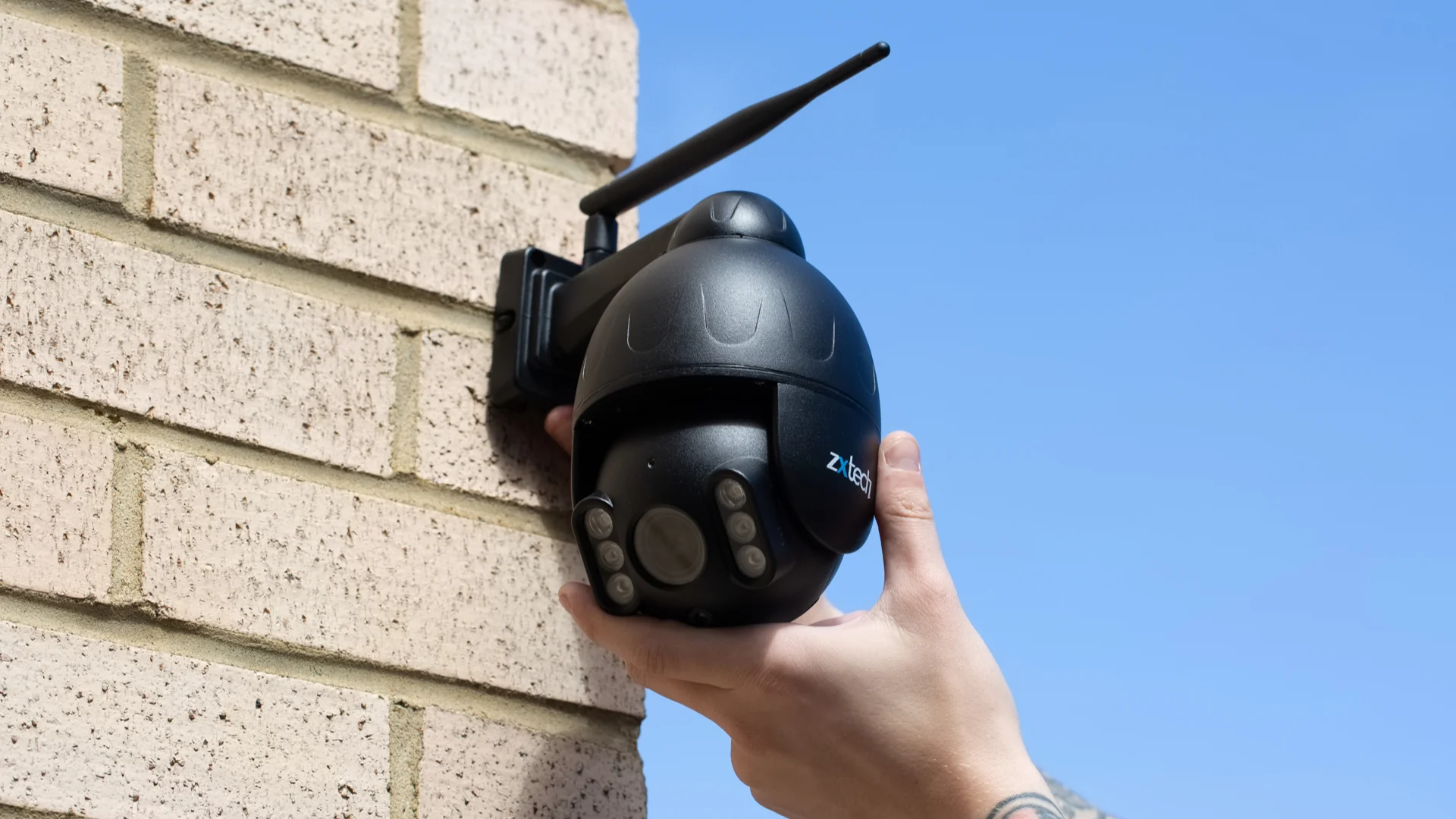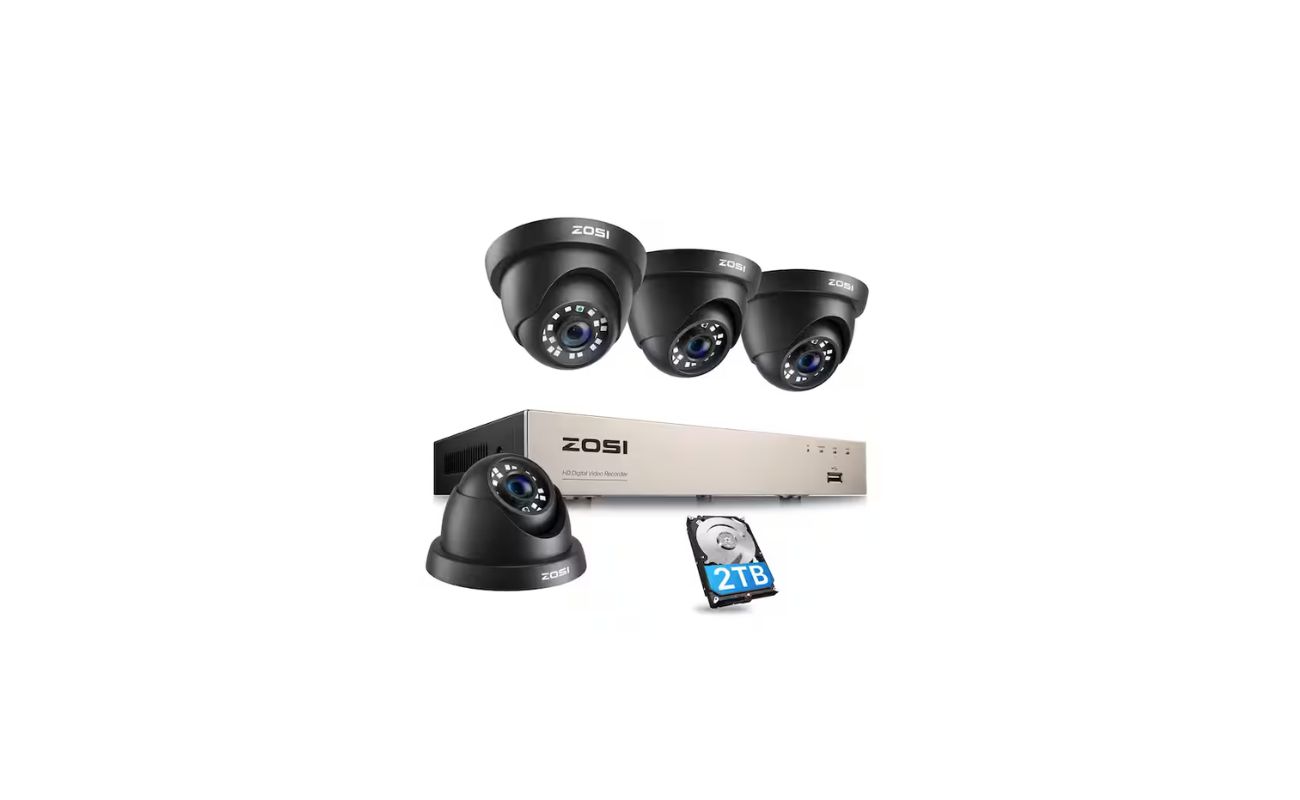Home>Home Security and Surveillance>How To Connect Cat5 Cable To CCTV Security Camera
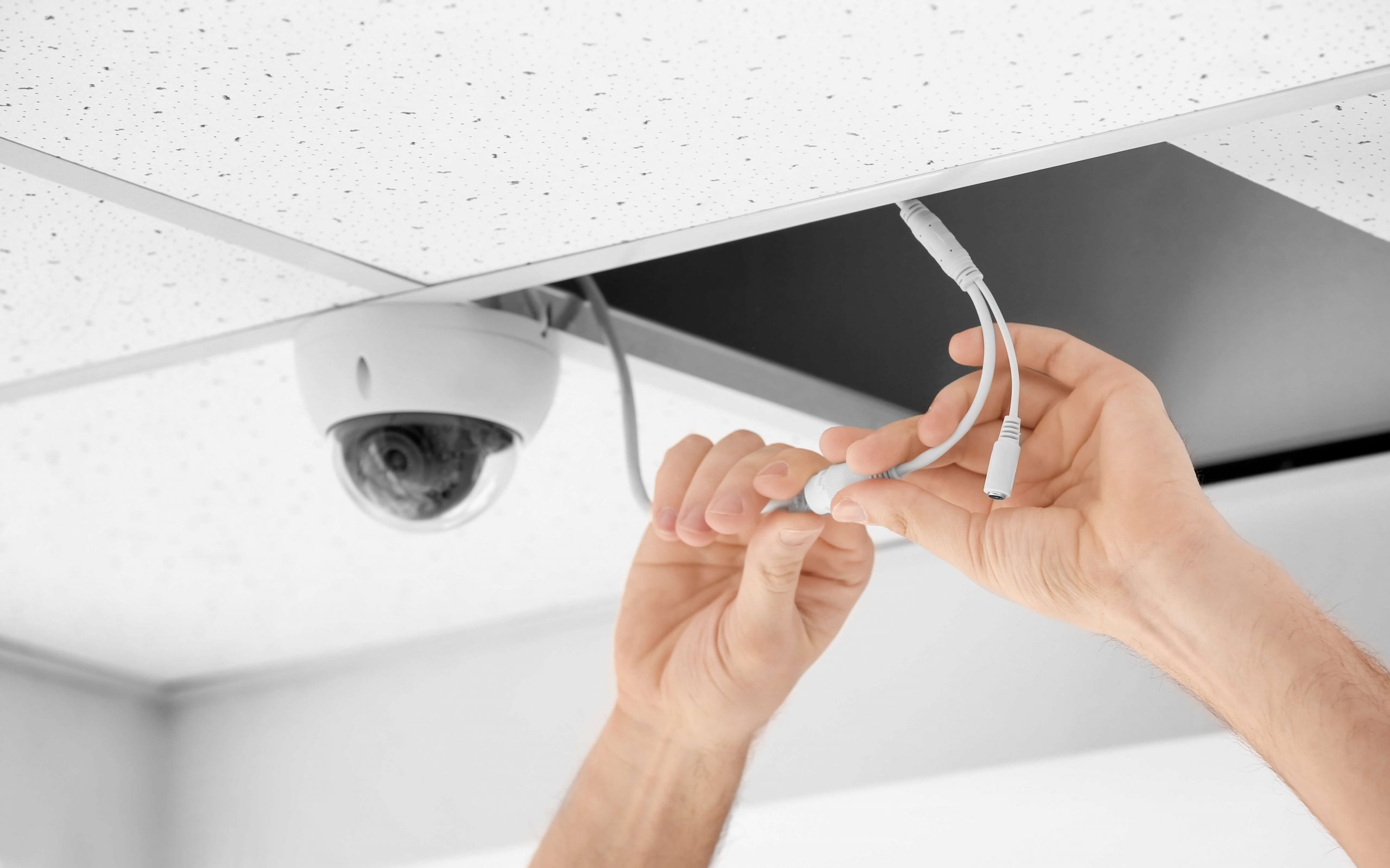

Home Security and Surveillance
How To Connect Cat5 Cable To CCTV Security Camera
Modified: March 6, 2024
Learn how to easily connect Cat5 cable to your CCTV security camera for efficient home security and surveillance.
(Many of the links in this article redirect to a specific reviewed product. Your purchase of these products through affiliate links helps to generate commission for Storables.com, at no extra cost. Learn more)
Introduction
Welcome to our comprehensive guide on how to connect Cat5 cable to your CCTV security camera. In this article, we will walk you through the step-by-step process of setting up a reliable and efficient connection between your CCTV camera and the Cat5 cable.
With the increasing importance of home security, many homeowners are turning to CCTV cameras to monitor their property and ensure the safety of their loved ones. CCTV cameras provide round-the-clock surveillance and a sense of security, but to fully utilize their capabilities, it is crucial to have a proper and sturdy connection.
One of the most popular and reliable methods to connect CCTV cameras is through Cat5 cables. Cat5, short for Category 5, is a type of Ethernet cable commonly used in networking applications. Its high-performance and affordability make it an ideal choice for connecting CCTV cameras to your home security system.
In this guide, we will explain the different types of Cat5 cables available on the market and help you choose the right one for your specific requirements. Additionally, we will discuss the necessary tools and materials needed for the installation process.
Furthermore, we will walk you through the step-by-step process of preparing the Cat5 cable, stripping it, terminating it, and finally, connecting it to your CCTV security camera. We will also provide tips for testing the connection to ensure everything is functioning as expected.
Whether you are a DIY enthusiast or a professional installer, this guide will equip you with the knowledge and skills needed to successfully connect your CCTV security camera using Cat5 cable.
So, let’s dive right in and learn how to establish a reliable and secure connection between your CCTV camera and Cat5 cable!
Key Takeaways:
- Connecting Cat5 cable to your CCTV security camera involves preparing, stripping, and terminating the cable with precision. Choosing the right cable type and testing the connection are crucial for a reliable surveillance system.
- Regular maintenance, including firmware updates and cleaning, is essential for optimal CCTV camera performance. Following the step-by-step guide ensures a secure and efficient connection for enhanced security.
Understanding Cat5 Cable
Before we dive into the installation process, it’s essential to understand the fundamentals of Cat5 cable. Cat5, or Category 5, is an Ethernet cable widely used for networking purposes. It consists of four twisted pairs of copper wires within a plastic sheath. Each pair of wires is color-coded for easy identification.
Cat5 cables are capable of transmitting data at speeds of up to 1000 Mbps (megabits per second) and have a maximum bandwidth of 100 MHz (megahertz). This makes them suitable for various applications, including computer networking, internet connections, and CCTV camera installations.
One of the significant advantages of using Cat5 cable is its ability to transmit both power and data over a single cable. This eliminates the need for separate power cables, simplifying the installation process and reducing potential clutter.
Additionally, Cat5 cables are known for their durability and reliability. They are designed to withstand interference, ensuring a stable connection for your CCTV cameras, even in challenging environments. The twisted pair configuration helps minimize crosstalk and electromagnetic interference, resulting in clear and uninterrupted data transmission.
It’s important to note that there are different variations of Cat5 cable, including Cat5e and Cat5e Plenum. Cat5e, or Category 5e, is an enhanced version of Cat5 cable, offering improved performance and faster data transfer speeds. Cat5e Plenum cables are specifically designed for installation in plenum spaces, such as the open areas above a drop ceiling or beneath a raised floor. Plenum cables are made with fire-retardant materials to meet safety regulations.
When choosing Cat5 cable for your CCTV camera installation, it’s crucial to consider factors such as cable length, environment, and specific requirements of your security system. Opting for Cat5e or Cat5e Plenum cables is generally recommended for enhanced performance and long-term reliability.
Now that we have a basic understanding of Cat5 cable, let’s move on to selecting the right cable for your CCTV security camera installation.
Choosing the Right Cat5 Cable for CCTV Security Cameras
When it comes to choosing the right Cat5 cable for your CCTV security cameras, there are a few factors to consider to ensure optimal performance and reliability. Here are some key considerations:
Cable Category:
It is recommended to choose Cat5e cables for your CCTV camera installation. Cat5e cables are designed with enhancements that offer better performance and higher data transfer speeds compared to standard Cat5 cables. These improvements help ensure a stable and reliable connection for your security cameras.
Cable Length:
Determining the cable length required for your CCTV camera system is essential. It’s advisable to measure the distance from your camera to the recording or monitoring equipment to determine the appropriate cable length. It’s always better to give yourself a bit of extra cable length to accommodate any future changes or adjustments.
Read more: What Is CCTV Security Cameras
Environment:
Consider the environment in which the cable will be installed. If you’re planning to run the cable through harsh conditions or outdoor areas, you may want to choose a cable with weatherproof or UV-resistant features to ensure durability and longevity.
Shielding:
In some cases, it may be necessary to choose a cable with additional shielding. Shielded Cat5e cables are designed to minimize electromagnetic interference from external sources, providing a more secure and stable connection. This is especially important if you’re installing the CCTV cameras near other devices or in areas with high electrical interference.
Cable Color:
While the color of the cable may not affect its performance, choosing a color that blends with your surroundings can make the installation more aesthetically pleasing. Consider choosing a color that matches the walls, ceilings, or other elements of your property.
Manufacturer’s Reputation:
It’s always recommended to choose Cat5 cables from reputable manufacturers known for their quality and reliability. Research different brands, read customer reviews, and seek out recommendations from professionals in the field to ensure you’re selecting a reputable product.
By taking these factors into account, you can make an informed decision and choose the right Cat5 cable that meets your CCTV security camera installation requirements.
With the appropriate Cat5 cable selected, you are now ready to gather the necessary tools and materials for the installation process. We’ll explore those in the next section.
Read more: How To Connect A Security Camera
Tools and Materials Required
Before you begin the installation process of connecting Cat5 cable to your CCTV security camera, it’s important to gather all the necessary tools and materials. Having these items on hand will help ensure a smooth and efficient installation. Here’s a list of tools and materials you’ll need:
Tools:
- Crimping tool: This tool is essential for terminating the ends of the Cat5 cable with RJ45 connectors. It allows for a secure and reliable connection.
- Wire strippers: These will be used to remove the outer sheath of the Cat5 cable and expose the individual wires inside.
- Utility knife or cable cutter: You’ll need this tool to cut the Cat5 cable to the desired length.
- Scissors: Useful for trimming excess wires and ensuring a clean termination.
- Network cable tester: This tool is optional but highly recommended. It helps ensure that the connections are properly terminated and that there are no faults or issues with the cable.
Materials:
- Cat5 cable: Choose the appropriate length and type of Cat5 cable (such as Cat5e) based on your requirements and the distance between your CCTV security camera and the recording or monitoring equipment.
- RJ45 connectors: These connectors will be crimped onto the ends of the Cat5 cable to establish a connection with your CCTV camera and other network devices.
- Heat shrink tubing (optional): This tubing can be used to provide additional protection and insulation to the terminated ends of the Cat5 cable.
- Tape or zip ties: Use these to secure the cables in place and prevent them from getting tangled or damaged.
By gathering these tools and materials, you’ll be well-prepared to tackle the installation process and ensure a successful connection between your CCTV security camera and the Cat5 cable.
Now that you have everything you need, let’s proceed to the step-by-step process of connecting the Cat5 cable to your CCTV security camera.
Step 1: Preparing the Cat5 Cable
Before you can connect the Cat5 cable to your CCTV security camera, it’s crucial to prepare the cable properly. This involves unraveling the cable, untwisting the wires, and straightening them for termination. Follow these steps to prepare the Cat5 cable:
1. Determine the Required Length:
Measure the distance between your CCTV camera and the recording or monitoring equipment to determine the required length of Cat5 cable. It’s advisable to add a bit of extra length to allow for flexibility and future adjustments.
2. Unravel the Cable:
Unravel the Cat5 cable gently, avoiding any kinks or twists. Lay it out along the path where you plan to install it, ensuring it’s free from any obstacles or obstructions.
3. Separate the Cable Pairs:
Identify the four twisted pairs of wires inside the Cat5 cable. Each pair will consist of two wires that are twisted together. Gently separate and untwist each pair, ensuring they are not tangled or intertwined.
4. Straighten the Wires:
Using your fingers, carefully straighten each individual wire within the pairs. Ensure that there are no bends or kinks in the wires, as this can impact the quality of the connection.
Read more: How To Connect A Security Camera To TV
5. Arrange the Wires:
Arrange the wires in the required order according to the wiring scheme you will be using. The most common wiring scheme for Ethernet networks, including CCTV cameras, is the T-568B standard. The order from left to right should be: orange-white, orange, green-white, blue, blue-white, green, brown-white, brown.
6. Trim Excess Wires:
Trim any excess wire length to ensure a neat and organized termination. Use your scissors or wire cutters to snip off any excess wire beyond the desired length.
By following these steps, you will have successfully prepared the Cat5 cable for termination. In the next step, we will guide you through stripping the cable to expose the individual wires.
Step 2: Stripping the Cable
Stripping the Cat5 cable is an essential step in connecting it to your CCTV security camera. Stripping involves removing the outer sheath of the cable to expose the individual wires inside. Follow these steps to strip the Cat5 cable:
1. Measure and Mark:
Measure approximately 2 inches (5 cm) from the end of the Cat5 cable and make a small mark with a pen or marker. This mark will indicate the length of the sheath that needs to be removed.
Read more: How To Connect A Security Camera To Computer
2. Cut the Sheath:
Using a utility knife or cable cutter, carefully cut the sheath of the Cat5 cable along the marked line. Be cautious not to cut too deep, as it may damage the wires inside. Make a clean and straight cut to ensure an easier stripping process.
3. Separate the Sheath:
Gently pull apart the cut ends of the sheath to expose the twisted pairs of wires inside. Take your time and be patient to avoid damaging the wires or pulling them out of their correct positions.
4. Remove the Sheath:
Slide the sheath down the length of the cable, carefully pulling it away from the wires. Be cautious not to pull too hard or too quickly, as it may damage the individual wires or cause them to stretch.
5. Untwist the Wires:
Once the sheath is removed, untwist each pair of wires. Take care to untwist them only as far as necessary, leaving the remaining twisted portion intact. This helps reduce potential signal interference.
Read more: How To Connect Wireless Security Cameras?
6. Straighten the Wires:
Gently straighten each individual wire within the pairs using your fingers. Ensure that there are no bends or kinks in the wires, as this can affect the quality of the connection.
7. Trim Excess Wires:
Using wire cutters or scissors, trim any excess length from the exposed wires. Make sure each wire is cut evenly to the desired length.
By following these steps, you have successfully stripped the Cat5 cable, exposing the individual wires. In the next step, we will guide you through terminating the cable with RJ45 connectors.
Step 3: Terminating the Cable
Terminating the Cat5 cable is a crucial step in establishing a secure and reliable connection for your CCTV security camera. Termination involves attaching RJ45 connectors to the stripped ends of the Cat5 cable. Follow these steps to terminate the cable:
1. Insert the Wires into the Connector:
Arrange the wires in the correct order according to the wiring scheme you are using (e.g., T-568B). Holding the connector with the metal pins facing down and the locking tab facing up, carefully insert the wires into the corresponding slots of the connector. Ensure that each wire makes good contact with its respective pin.
2. Ensure Proper Alignment:
Make sure the wires are fully inserted into the connector and that they are properly aligned with the guide inside. Ensure that no wires are crossing over or touching each other, as this can cause connectivity issues.
3. Trim Excess Wire:
Hold the connector and wires firmly in place and use wire cutters or scissors to trim any excess wire protruding from the front of the connector. Ensure a clean and even cut to avoid any interference or signal loss.
4. Crimp the Connector:
Using a crimping tool, apply firm and consistent pressure to the connector, crimping it down onto the wires. The crimping process securely fastens the connector to the cable, ensuring a reliable connection. Follow the instructions provided with your crimping tool for the best results.
5. Repeat for the Other End:
Repeat the above steps to terminate the other end of the Cat5 cable with an RJ45 connector. Make sure to use the same wiring scheme and maintain consistency between both ends of the cable for proper connectivity.
By following these steps, you have successfully terminated the Cat5 cable with RJ45 connectors. In the next step, we will guide you through connecting the cable to your CCTV security camera.
Read more: How To Secure Home CCTV
Step 4: Connecting the Cable to the CCTV Security Camera
Now that you have properly terminated the Cat5 cable, it’s time to connect it to your CCTV security camera. Follow these steps to ensure a secure and reliable connection:
1. Locate the Camera Connection Port:
Identify the camera connection port on your CCTV security camera. It is usually located at the back or bottom of the camera and is labeled “Ethernet” or “LAN.”
2. Insert the RJ45 Connector:
Carefully insert the RJ45 connector at the stripped end of the Cat5 cable into the camera’s Ethernet port. Ensure that the connector is fully inserted and clicks into place. The locking tab on the connector should engage securely with the port.
3. Secure the Connection:
Once the connector is in place, gently tug on the cable to ensure that it is firmly connected. Verify that there is no excessive movement or looseness in the connection. A snug and secure connection is necessary for proper functionality.
Read more: How To Connect To Cameras Wireless Security
4. Follow Camera Instructions:
Refer to the instruction manual or user guide provided with your CCTV security camera for any specific instructions on connecting the Cat5 cable. Some cameras may require additional steps or settings to be configured for network connectivity.
5. Power on the Camera:
After connecting the Cat5 cable, power on your CCTV security camera. Ensure that it is receiving power through the appropriate power source, such as a wall outlet or power-over-Ethernet (PoE) injector. Check the indicator lights on the camera to confirm that it is properly powered.
6. Confirm Network Connection:
Verify that the camera is successfully connected to your network by checking the network status. Depending on your setup, you may need to access the camera’s web interface or use a network scanning tool to identify the camera’s IP address.
By following these steps, you have successfully connected the Cat5 cable to your CCTV security camera. In the final step, we will guide you through testing the connection to ensure everything is working as expected.
Step 5: Testing the Connection
Once you’ve connected the Cat5 cable to your CCTV security camera, it’s important to test the connection to ensure that everything is functioning as expected. Follow these steps to test the connection:
1. Check Network Accessibility:
Ensure that your CCTV security camera is accessible over the network. Use a computer or mobile device connected to the same network to access the camera’s web interface or the corresponding security camera software. Verify that you can view the live feed or access the camera’s settings.
2. Test Video Quality:
Observe the video feed from your CCTV security camera and check for any abnormalities or issues with the image quality. Look for clear and crisp video without distortion, pixelation, or lag. Ensure that the camera is capturing the desired field of view and that the footage is of satisfactory quality.
3. Test Remote Viewing:
If you plan to access your CCTV security camera remotely, such as through a mobile app or web portal, test the remote viewing functionality. Connect to the camera from a device outside your local network to ensure that you can access the live video feed and control the camera’s settings.
4. Check Recording Functionality:
If your CCTV security camera has recording capabilities, test the recording functionality to ensure that it is properly configured and functioning. Verify that the camera is capturing footage and storing it in the desired location, such as a network video recorder (NVR) or cloud storage.
5. Monitor Network Performance:
Keep an eye on your network performance after connecting the CCTV security camera. Ensure that the camera’s network connection is not causing any significant slowdowns or disruptions to other network devices or applications.
6. Perform Regular Maintenance:
Once the connection is tested and confirmed, it is essential to perform regular maintenance on your CCTV security camera system. This includes checking for firmware updates from the camera manufacturer, cleaning the camera lens, and inspecting the Cat5 cable for any signs of damage or wear.
By following these steps and testing the connection, you can ensure that your CCTV security camera is functioning properly and providing the desired surveillance capabilities. Regular maintenance and testing will help maximize the effectiveness and reliability of your system.
Congratulations! You have successfully completed the process of connecting the Cat5 cable to your CCTV security camera. Now you can enjoy enhanced security and peace of mind knowing that your surveillance system is up and running.
Conclusion
In conclusion, connecting Cat5 cable to your CCTV security camera is a crucial step in setting up an efficient and reliable surveillance system for your home or business. By following the step-by-step process outlined in this guide, you can establish a secure and high-quality connection that ensures the seamless transmission of video and data.
Understanding the fundamentals of Cat5 cable and choosing the right type based on your specific requirements are essential aspects of the installation process. Cat5e cables are recommended for their enhanced performance, while factors such as cable length, environment, and shielding should also be considered.
Gathering the necessary tools and materials, including a crimping tool, wire strippers, and RJ45 connectors, is crucial for a successful installation. Properly preparing the Cat5 cable, stripping the outer sheath, and terminating the wires with precision are key steps that ensure a secure and stable connection.
Connecting the Cat5 cable to your CCTV security camera requires identifying the camera connection port, inserting the RJ45 connector, and verifying a secure attachment. Testing the connection is essential to confirm network accessibility, video quality, remote viewing functionality, and recording capabilities.
Regular maintenance and testing of your CCTV security camera system are crucial to ensure optimal performance and reliability. Performing firmware updates, cleaning the camera lens, and inspecting the Cat5 cable for any signs of damage are important practices for long-term system functionality.
By following this comprehensive guide, you have gained the knowledge and skills necessary to successfully connect Cat5 cable to your CCTV security camera. Enjoy the benefits of a reliable and efficient surveillance system that provides enhanced security and peace of mind for your home or business.
Remember, safety and security should always be a top priority, and if you’re unsure about any aspect of the installation process, it’s best to consult with a professional installer or seek guidance from the camera manufacturer.
Frequently Asked Questions about How To Connect Cat5 Cable To CCTV Security Camera
Was this page helpful?
At Storables.com, we guarantee accurate and reliable information. Our content, validated by Expert Board Contributors, is crafted following stringent Editorial Policies. We're committed to providing you with well-researched, expert-backed insights for all your informational needs.
